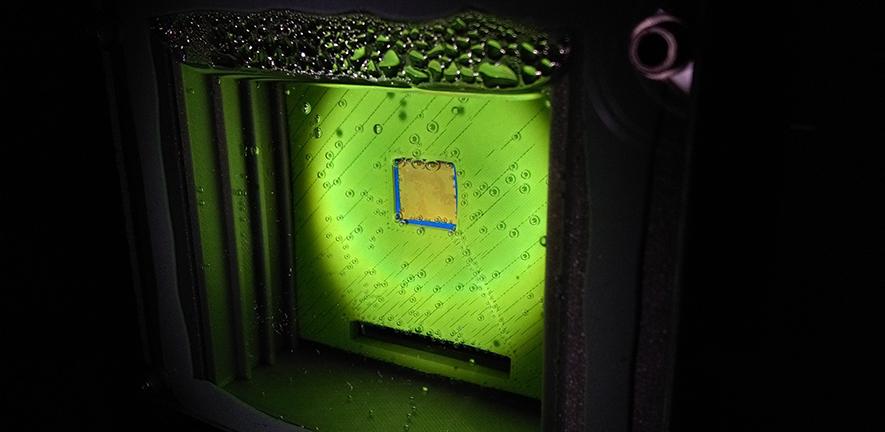2019/10/23 アメリカ合衆国・ノースウェスタン大学

・ ノースウェスタン大学、アルゴンヌ国立研究所(ANL)およびエイムズ研究所が、大量の廃プラスチックを、モーターオイル、潤滑油や化粧品等の高品質液体製品にアップリサイクルする触媒技術を開発。
・ 同技術はまた、安価な低品質プラスチック製品を産出する現在のリサイクル方法を向上させる。環境汚染を低減しながら、よりサステナブルで環境や人に優しいプラスチック材料を提供し、循環経済の促進に貢献すると考える。
・ 世界で毎年 3.8 億トンが生産されるプラスチックは、2050 年にはその量が 4 倍になると予測されている。これらのプラスチック材料のうち 75%超が一度の使用後に廃棄されており、海洋、水源や環境汚染の原因となっている。
・ 溶解・再加工によるプラスチックの従来的なリサイクル方法で得られるのは、元の材料のような構造的強度を持たない低品質プラスチック(例:プラスチックボトルのダウンリサイクルによる公園の成形ベンチ等)。
・ 強力な炭素-炭素結合で構成されるプラスチックは埋立処理後も分解せず、マイクロプラスチックと呼ばれる小さなプラスチックに細分化する。本研究では、この強力な炭素-炭素結合を保持する高エネルギーに着目。ポリエチレン分子を触媒で高付加価値の商業製品に変換する。
・ 同触媒は、50~60nm サイズのペロブスカイトナノキューブに白金ナノ粒子を原子層堆積法(ALD)で積層したもの。高温度、高圧下でも安定し、エネルギー変換能力の非常に優れた材料であるペロブスカイトを採用した。ANL が開発した同 ALD 技術では、ナノ粒子を精確に制御できる。
・ 同触媒は、適温、適圧下でプラスチックの炭素-炭素結合を切断し、様々な製品に利用可能な高品質の液体炭化水素を生成する。これが、多数の短い炭化水素から成る低品質の製品を生成する市販の触媒と異なる点。
・ また、温室効果ガスと有害な副生物を排出する従来の溶解や触媒によるリサイクル方法と異なり、同プロセスでは廃棄物量が大幅に低減。
・ 本研究は、米国エネルギー省(DOE)科学局の基礎エネルギー科学局(BES)が支援した。
URL: https://news.northwestern.edu/stories/2019/10/turning-plastic-trash-into-treasure/
(関連情報)
ACS Central Science 掲載論文(アブストラクトのみ:全文は有料)
Upcycling Single-Use Polyethylene into High-Quality Liquid Products URL: https://pubs.acs.org/doi/abs/10.1021/acscentsci.9b00722
<NEDO海外技術情報より>
Abstract
Our civilization relies on synthetic polymers for all aspects of modern life; yet, inefficient recycling and extremely slow environmental degradation of plastics are causing increasing concern about their widespread use. After a single use, many of these materials are currently treated as waste, underutilizing their inherent chemical and energy value. In this study, energy-rich polyethylene (PE) macromolecules are catalytically transformed into value-added products by hydrogenolysis using well-dispersed Pt nanoparticles (NPs) supported on SrTiO3 perovskite nanocuboids by atomic layer deposition. Pt/SrTiO3 completely converts PE (Mn = 8000–158,000 Da) or a single-use plastic bag (Mn = 31,000 Da) into high-quality liquid products, such as lubricants and waxes, characterized by a narrow distribution of oligomeric chains, at 170 psi H2 and 300 °C under solvent-free conditions for reaction durations up to 96 h. The binding of PE onto the catalyst surface contributes to the number averaged molecular weight (Mn) and the narrow polydispersity (Đ) of the final liquid product. Solid-state nuclear magnetic resonance of 13C-enriched PE adsorption studies and density functional theory computations suggest that PE adsorption is more favorable on Pt sites than that on the SrTiO3 support. Smaller Pt NPs with higher concentrations of undercoordinated Pt sites over-hydrogenolyzed PE to undesired light hydrocarbons.



